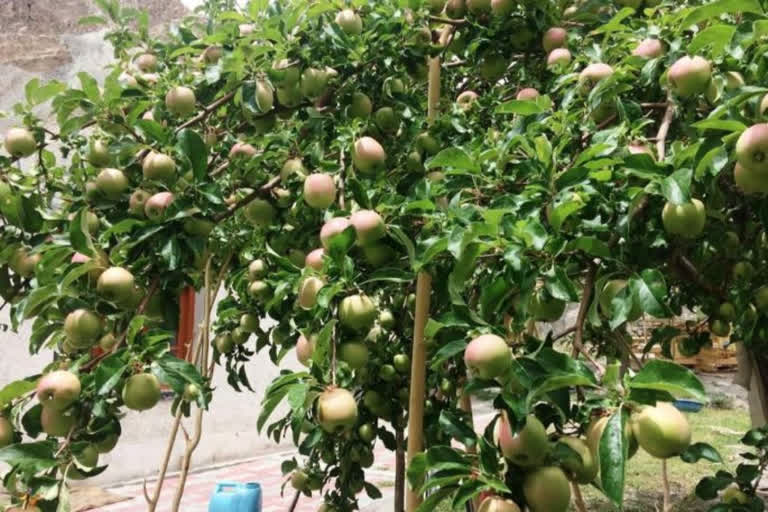Srinagar (Jammu and Kashmir): The “Raktsey Karpo” apricots of Ladakh region, famous for their sweetness, have got the Geographical Indication (GI) tag. The tagging is primarily done for agricultural, natural, or manufactured products, handicrafts, and industrial goods originating from a specific area in any part of the world. The Ladakh apricots got this coveted GI tagging a couple of years after the first application was made to the Centre.
Speaking exclusively to ETV Bharat over the phone, a senior scientist at the Defense Institute of High Altitude Research (DIHAR), Leh, Dr. Tsering Stobdan, who has worked extensively on Ladakh apricots, said that the tagging is going to benefit local farmers of the region greatly. He said that the introduction of the GI tag is expected to increase the popularity and production of apricots in the region.
Explaining about the unique features, Dr. Stobdan said, "Apricot genotypes indigenous to Ladakh such as Raktsey Karpo apricot have a white seed coat that is not found anywhere in the world except Ladakh. It is most preferred by consumers for fresh consumption. In addition, Raktsey Karpo apricot contains significantly more sorbitol than brown-coated fruits."
The senior scientist said that Ladakh is the largest producer of apricots in India. With a total production of 15,789 tonnes per year, it accounts for 62% of the apricot production in the country. Earlier, the bulk of apricots produced was consumed locally and a small quantity of dried apricots was sold elewhere. This resulted in huge losses to the farmers as 50% of it was lost. After Ladakh became UT, the fruit was exported outside the region for the first time in 2021."
He said that high-altitude environmental conditions in this region play an important role in enhancing the sweetness of apricots. He further added, "Also, apricots from Ladakh are late ripeners. Around the world, the fruit is harvested between mid-July. In Ladakh, ripening is delayed due to climatic conditions." And the fruit ripens in August. Hence, the Ladakh apricot has a comparative advantage as it does not coincide with the main apricot season in global markets."
When Ladakh was a part of Jammu and Kashmir, there were some restrictions on exports, but after it became a union territory, exports started, and the product was sent to Dubai and many other countries. Now our focus is on fresh fruit as processing will reduce the quality, the scientist said.



